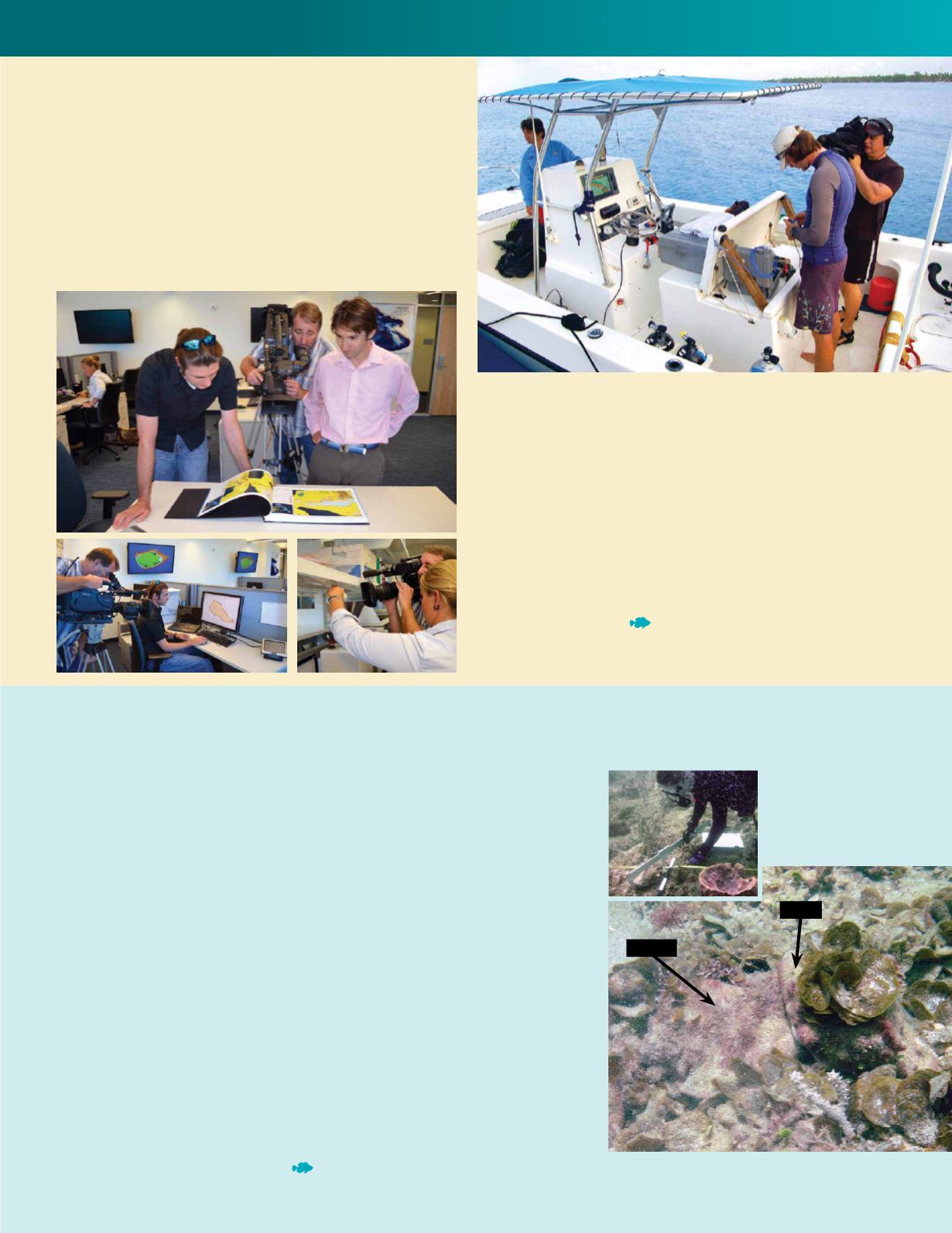
6
Researchers Highlighted on
WPBT’s
Changing Seas
The Belize research of
Nicole Fogarty
, Ph.D., assistant
professor, was the focus of an episode entitled “Coral
Hybrids” onWPBT’s
Changing Seas
. This series, made possible
by a grant from the Batchelor Foundation, goes to sea with
scientists as they investigate how they conduct research in
“earth’s last frontier.”
Sam Purkis, Ph.D., associate professor (left), and Jeremy Kerr, Ph.D. candidate,
are filmed by cameraman Allan Farrell for
Changing Seas
.
Other OC researchers have worked on
Changing Seas
episodes,
including
Mahmood Shivji
, Ph.D., professor, in the popular
episode “Tracking Tigers.”
SamPurkis
, Ph.D., associate professor;
Jeremy Kerr
, Ph.D. candidate; and
Alexandra Dempsey
, M.S.
student, were featured in the episode “Reefs of Rangiroa.”
The Oceanographic Center has hosted several public viewings
of current
Changing Seas
episodes during its
Dive-In summer
series
at the Center of Excellence for Coral Reef Ecosystems
Research. For more information about the series, please visit
Student and Researcher Study Conch in Broward County
Brian Walker
, Ph.D., research scientist, and
Charlotte Berry
, M.S. student,
recently conducted a study of conch aggregation population demographics
and habitat association north and south of Port Everglades inlet as part of
Berry’s master’s thesis. The queen conch (Strombus gigas) is a large gastropod
found throughout the Caribbean and in Florida. Overfishing and habitat
loss have led to a region-wide decline in their abundance. Aggregations of
conch occur in central Broward County, near Fort Lauderdale Beach. The main
aggregation is located south of Port Everglades in a large, man-made channel
that bifurcates the near-shore habitat with a 40-foot-deep trench for large-
vessel access to the port.
In July and August 2012, benthic cover and conch data were collected along
transects at 72 random locations stratified across four habitats north and south
of the inlet. Conchwasassociatedwithbenthichabitatsdominatedbymacroalgae
and sand. Spatial analysis on conch abundance varied between different age
classes. Younger conch were found throughout all habitats, but mostly at the
colonized pavement west (CPW) sites, while older conch were only found at a
specific CPW site south of the inlet. Significantly more conchs were found on
CPW habitat south of the port, supporting the hypothesis that the channel may
impede population movement. However, the habitat associated with the main
aggregation may have a unique benthic algal community composition as well.
Conch were observed mating, making this the northernmost known mating site
in the United States. This work was presented at the Benthic Ecology Meeting in
Savannah, Georgia, in March 2013.
Mating conch, south of Port Everglades inlet in Florida
Charlotte Berry, M.S.
student, does some
measuring.
female
male
Photos courtesy of Alexa Elliott, WPBT2


